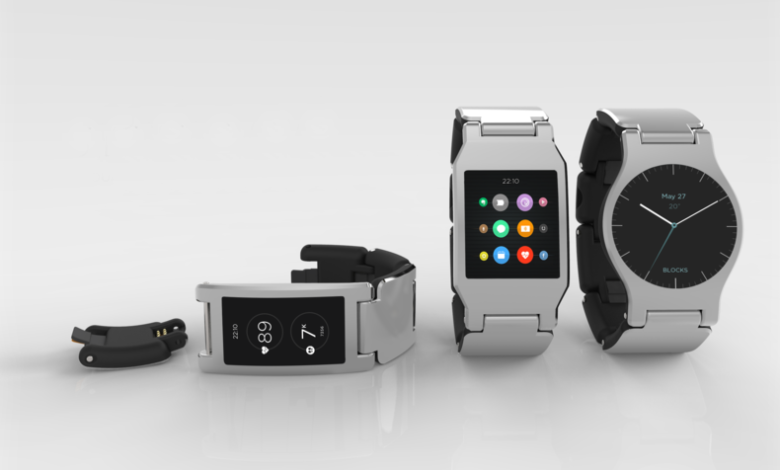Blocks Wearables Modular Smartwatch Will Launch Soon


At CES this year, Blocks Wearables revealed a mock up designed for a modular smartwatch with modules that could be interchanged in a similar way to the Google Project Ara smartphone. The company is coming closer to reaching a final design and has made new announcements about the smartwatch, revealing it will start taking orders this summer.
The main module of the smartwatch which includes the face will be created using a Qualcomm Snapdragon 400 processor which is similar to the types of processor found inside Android Wear smartwatches. However, instead of a finished and ready made smartwatch, the Block watch will be made from modules that will allow new pieces to be snapped into the band that will change and enhance the features of the watch. Blocks has said that modules will be available for all sorts of things from extending batteries to adding GPS or contactless payments. The company has also said that they are planning to design and build modules for biometric tracking such as a heart rate monitor.
There are two main problems that the company has come across when during the designing of its device and it has managed overcome both of them with interesting solutions. The modular concept of the watch means that new features can be added to customise the device but it also means that the battery will have to work harder in order for the watch to function with the extra features. The battery of the Blocks watch will have a standby time of around two days, but this is just to run the basic watch. In order to get around the problem of extra modules consuming more power, the company has developed a circuit board for each module which has its own ARM Cortex M0 processor that can take care of basic functions. This means that adding extra modules won’t eat into the two day battery life as the mini processors will keep power consumption low.
The second problem the company has faced is how the modules will lock together to create a functioning design when new parts are added. For this, a flexible circuit will be used to connect the modules and captive pin system will keep them together. The system is similar to that found in guns which ensures that pins don’t get lost. A button on the modules can be pressed which makes a pin slide out from a spring system, the pin can’t escape and the module also can’t be disconnected accidentally while the watch is being worn.
The modular design is not the only interesting thing about the Blocks Wearables smartwatch- it will run Android Lollipop and will also be compatible with other Android devices as well as iOS devices too. It’s said that the watch will have a simple and paired down operating system. Smartwatches that connect between Android and iOS devices are uncommon and so if the design goes according to plan then the watch may have a unique attraction for buyers.
Blocks Wearables originally worked with Intel on designs for its smartwatch and the first prototypes were based on the Edison system. However, the company has now moved to working with Qualcomm, making use of the processor for the watch face, the most important part of any watch. The touch screen smartwatch will feature Bluetooth, a microphone, push notifications and options for a fingerprint scanner, sim card reader, environmental sensor, audio jack and more. A working prototype of the design is yet to be revealed but the company is expected to offer a number of watch face options including circular and rectangular screens. Another option may be an e-ink touch screen which, as with the other screens, would allow users to swipe to read notifications, take calls and view events scheduled into their calendars.
Blocks is planning to start a crowdfunding campaign beginning with a Kickstarter campaign this June in order to fund the manufacturing of the new watch and finish any design developments. Blocks will then begin taking pre-orders for the watch in the summer. The company hopes it will be able to start shipping the first watches before the end of the year and by then we should be able to see a working modular design.



